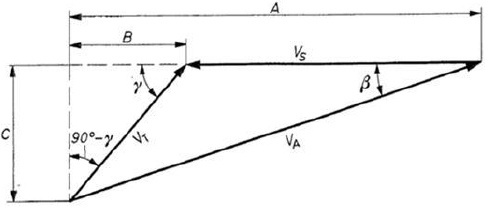What is New in the Windfair World - The Vindskip™ Project
As the World attempts to go green, the shipping industry has now created a potential alternative-energy ship design called “Vindskip™.” Designed by Oslo-based design firm Lade AS, the ship uses an “air-foil” technology, where its high sides are used as sails. When not using wind, the hybrid merchant ship uses liquefied natural gas (LNG) and could potentially achieve up to 60% of fuel savings and reduce emissions by up to 80%. Vindskip™ is also unique in that it can use wind power the same way an airplane uses wind power, allowing it to almost sail directly into the wind.
“It uses apparent wind, or the sail wind, to generate pull in much the same way that an airplane will take off when it reaches a certain speed,” said lead designer Terje Lade. Along with the hull’s side design, the computer software being developed by Germany’s Fraunhofer Center for Maritime Logistics and Services is just as vital. Using the weather and prevailing winds on the sea, the software would help prepare a route for the ship.
“With this software, you input when you want to leave and when you want to arrive, the weather forecast is loaded into the program and then it calculates the best route,” said Lade. Laura Walther, researcher at CML in Hamburg stated that, “with our weather routing module the best route can be calculated in order to consume as little fuel as possible. As a result costs are reduced. After all, bunker [fuel] expenses account for the largest part of the total costs in the shipping industry.”
The alternative-energy design of the Vindskip™ comes at an important time, with changes to international regulations in sulfur content of marine heavy fuels, capping the sulfur content from 3.5% to 0.5% by 2020. This will not only cause bunker fuel costs to rise, but engine-cleaning costs.
“This is where the ‘Vindskip™ comes in,” said Lade. “Due to the low fuel consumption, it can run on LNG which means there is no sulfur at all.” Even though some researchers doubt the wind-assisted design will actually work, Lade is confident the first Vindskips will set sail by 2019.
Insight: Difference between true wind (True Wind) and relative wind (Apparent Wind)
True wind is the wind measured on board a stationary ship. When the ship starts moving, the so-called relative wind is being generated: The apparent wind measured on board a ship. The Wind Power System of Vindskip™ utilizes this Apparent Wind and generates a positive force in the longitudinal direction of the ship as a function of the angle of attack.
The concept of the Apparent Wind
The concept is introduced to simplify the study of the forces acting on a sail. By postulating an apparent wind we can consider a sail at rest with airflow over it. Thus, for example, we can use a wind tunnel to simulate actual sailing conditions. In a similar manner to the aircraft designer who can study the forces acting on a stationary aeroplane model operating in an airstream generated in the wind tunnel.

Ref.: C.A. Marchaj, AERO-HYDRODYNAMICS OF SAILING
Ships speed - VS
True wind - VT
Apparent wind - VA
Angle of Attack - angle between the chord line of the air foil and the apparent wind vector – â
Angle between the chord line of the air foil and the True wind vector at VS=0 - ã
VS = A – B
cot â = A/C
VS/VT = sin ã x cot â – cos ã
To receive more information on this article, our Newsletter or find out more about what w3.windfair.net has to offer, please, do not hesitate to contact Trevor Sievert at ts@windfair.net.
Please don't forget to follow us on Twitter: w3.windfair.net on Twitter
w3.windfair.net is the largest international B2B internet platform in wind energy – ultimately designed for connecting wind energy enthusiasts and companies across the globe.
- Source:
- Lade AS
- Author:
- Edited by Trevor Sievert, Online Editorial Journalist / by Lade AS
- Email:
- ts@windfair.net
- Link:
- w3.windfair.net/...
